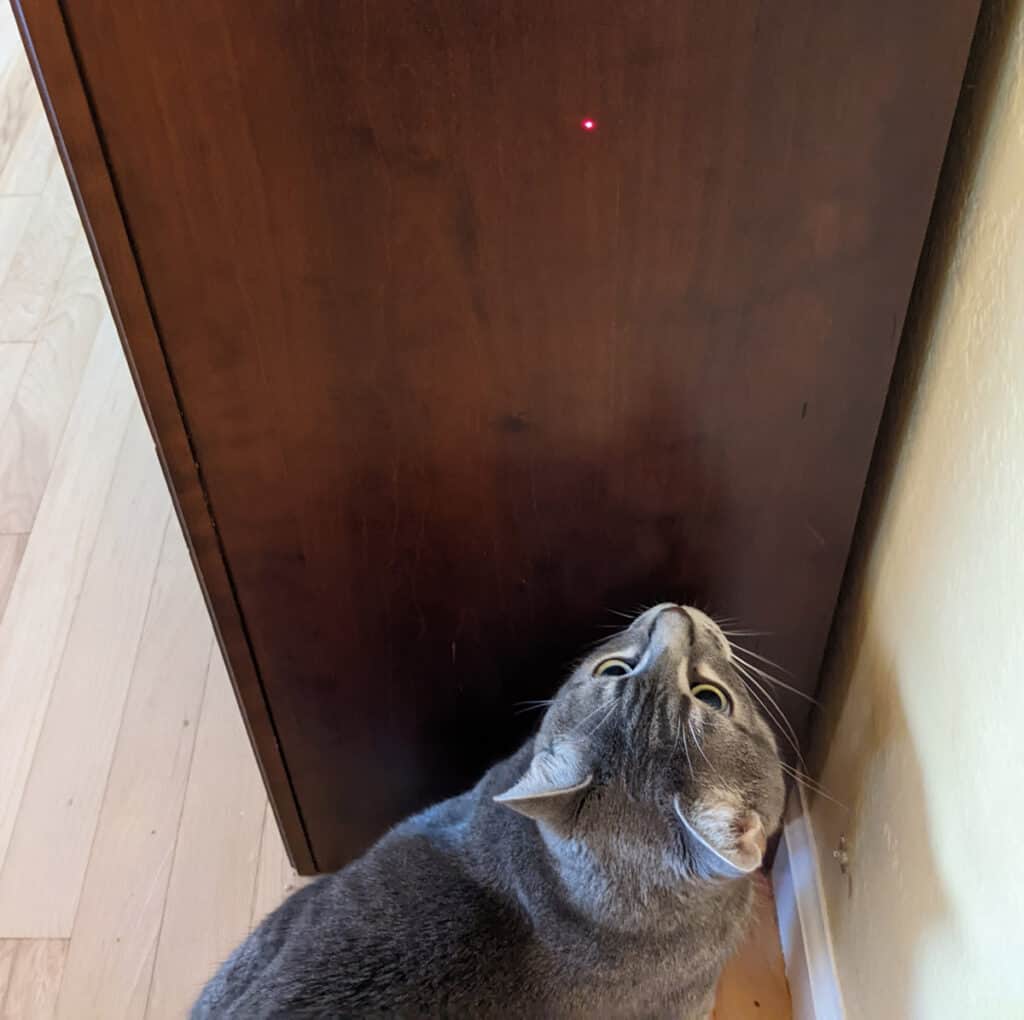While cats have a reputation for sleeping away most of the day, they do still need to exercise. Playing with you cat is a great way to provide them with stimulation while bonding with them.
One of the best ways to enhance play and exercise time is with the use of cat toys.
There are lots of toys available for cats, both ones you can buy and ones you can make yourself. With all the options, how do you figure out which toy your cat will actually play with?
One of the ways to figure out what kind of cat toys your cat likes is to figure out their prey preference and find toys that mimic that.
Cats have a prey preference
Research published in Applied Animal Behaviour Science found that domestic cats have a prey preference. Some cats like to hunt small rodents, other cats prefer to hunt birds or insects.
The study asked owners in Australia to record any prey their free-roaming cats brought home to see what types of prey each cat caught. The researchers also directly observed cats hunting to see what prey they went after.
The authors of the study concluded that cats have an individual preference for the type of prey they hunt. Some cats are specialists and only hunt specific animals. Other cats are generalists and will hunt whatever prey they can find.
Matching your cat’s prey preference to cat toys
How does this tie into cat toys? The key is to figure out what kind of prey your cat naturally prefers and to buy toys that stimulate that prey drive through play. If you have multiple cats in your household, you will probably notice that your cats don’t all like to play with the same types of toys.
The best way to figure our your cat’s prey preference is to try different styles of toys to see what types your cat enjoys.
If your cat responds best to toys dangled in the air with feathers or toys that make chirping sounds, their prey preference is birds. If they respond best to toys shaped like mice, balls that bounce, or crinkly toys, their prey preference is small rodents. If your cat loves to jump after a laser pointer light or chase a wiggly wand toy with fabric at the end, their prey preference might be insects.
You may find that your cat enjoys playing with toys of more than one type. Some cats are generalists and don’t have a specific prey preference.
Explore Cats is a participant in the Amazon Services LLC Associates Program, an affiliate advertising program designed to provide a means for sites to earn advertising fees by advertising and linking to amazon.com.
Feather wands for cats who love to chase birds
Cats who love to chase birds will enjoy feather wands. These cats will also find enjoyment in toys with feathers attached to them.

Crinkly toys for cats who love to chase mice
Cats who chase rodents will enjoy crinkly cat toys that mimic the high-pitched sound that rodents make.
Hanging a toy mouse from a doorway is also a fun and stimulating toy for some cats.

Laser pointers for cats who love to chase butterflies and moths
Cats who love to chase insects will enjoy toys that mimic the movements of of insects like this fluttering butterfly electronic toy or a laser dot toy (be careful not to shine the red light into your cat’s eye or anyone else’s eyes).

Cats who love to hunt things that wiggle like worms and snakes will have fun with a cat wand toy.
The key is to experiment with different styles of toys until you understand what kind of prey preference your house cat is indicating. Once you have a better understanding of their prey preference, you can stick to buying specific toys that best mimic the behaviors of that prey.
Cats that are generalist will enjoy a wider range of cat toys than cats who have a specific prey preference.
Mimic the prey movements with the cat toys
Make sure when you play with your cat that you mimic the prey’s movements. A feather wand lying still on the ground isn’t going to stimulate your cat’s interest. Your moving the wand horizontally above the ground will stimulate your cat to hunt it.
References
Dickman, C. R., & Newsome, T. M. (2015). Individual hunting behaviour and prey specialisation in the house cat Felis catus: implications for conservation and management. Applied Animal Behaviour Science, 173, 76-87.






